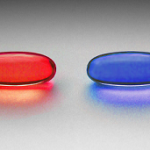What is an Active Control?

Studies that compare an experimental treatment against an ineffective placebo are the “gold standard” for drug testing and provide valid, reliable results. However, there are times when giving patients a placebo is unethical. For example, giving a cancer patient no treatment at all is morally unacceptable. This is when active controls are used.
Although it would seem reasonable to give some treatment to everyone (instead of no treatment to some), trials that use active controls are notoriously difficult to design, implement, and interpret.
Difference in Interpretation of Trial Results
Results from an active control/active comparator trial require a different interpretation than a placebo control trial.
In a placebo control trial, a difference in results between the experimental group and control group indicate the new treatment is potentially effective. For example, if an experimental drug prevents headaches 90% of the time and a placebo prevents headaches 10% of the time, that large difference indicates that the experimental drug is working.
With an active control trial, the researcher is not looking for a difference in results; They are looking for no difference. In theory, a finding of “no difference” can indicate that the experimental drug is equally as effective as the comparator. For example, let’s say a well-known headache medicine (the “comparator”) prevents headaches 80% of the time and an experimental drug also prevents headaches with the same frequency (80%). There’s no difference — the drugs are equally effective and so the trial is a “success.” In practice though, active control trials are notoriously difficult to interpret. A finding of “no difference” in one of these trial can mean several different things:
- The experimental drug and the active comparator are equally as effective.
- Both drugs are ineffective.
- The study was unable to tell the difference between the two drugs (i.e. it was poorly designed or administered).
One way to ensure that results are valid is to prove that the active comparator is superior compared to a placebo. This could require a separate trial (which, again, could lead to ethical problems). In some cases, prior knowledge about the comparator’s effectiveness — perhaps from prior studies or other clinical data — can validate results from an active control trial.
References
Cook, T. (2005). Introduction to Statistical Methods for Clinical Trials (Chapman & Hall/CRC Texts in Statistical Science) 1st Edition. Chapman and Hall/CRC
Friedman (2015). Fundamentals of Clinical Trials 5th ed. Springer.